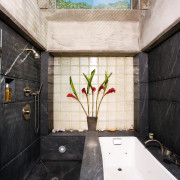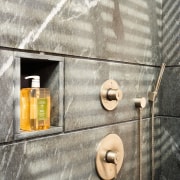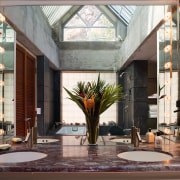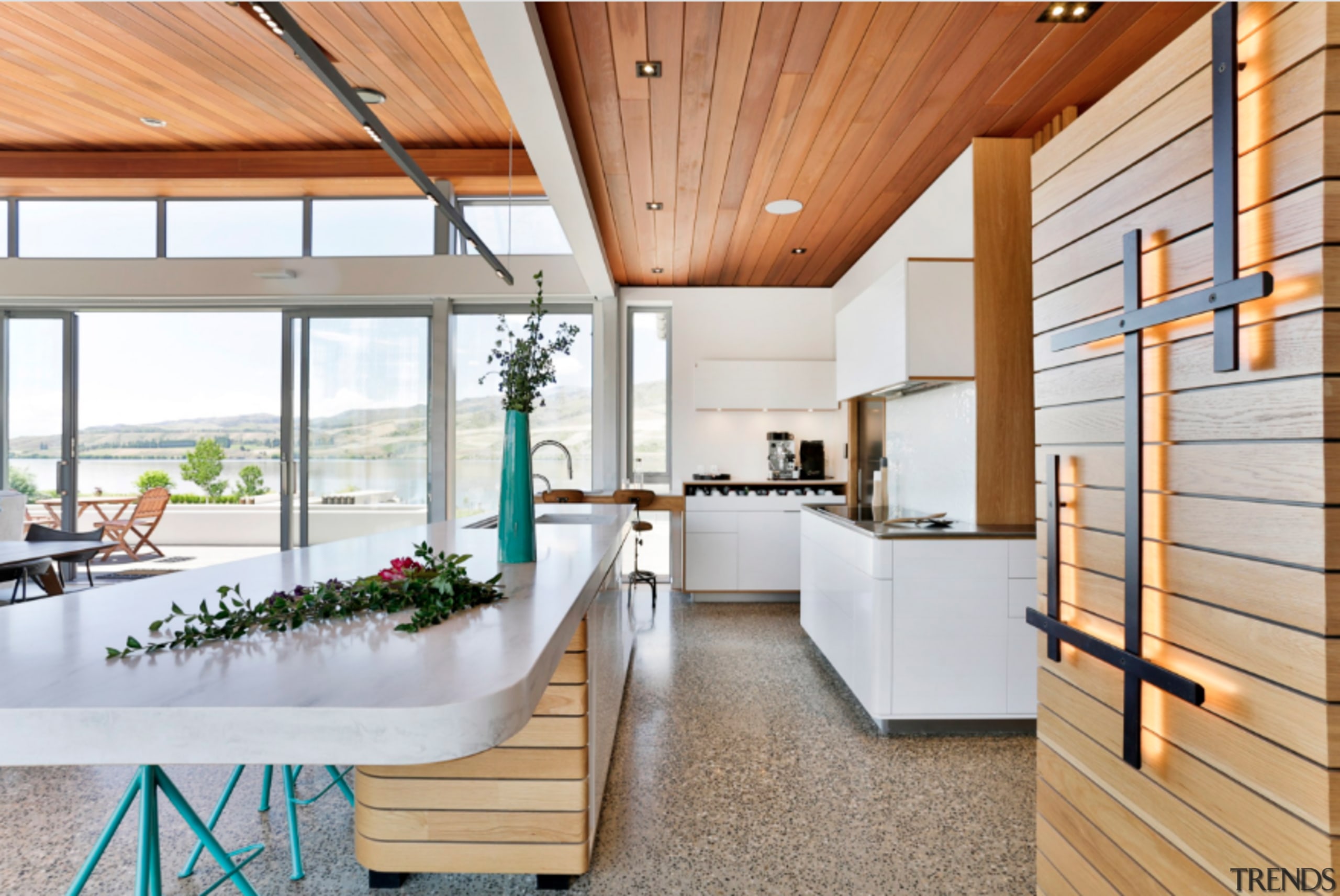Surface reflections
Flooded with natural light throughout the day, this remodeled bathroom brings together an eclectic array of materials and colors
When remodeling a bathroom, introduced elements generally play off any features that have been retained. This can work by extending the use of existing materials or tones, or alternatively by broadening the material palette, with a view to an eclectic but harmonious mix.
The latter was the case when architect David Gray reinvented this bathroom in his own light-filled coastal home. While much of the space was remodeled, Gray kept the rose-hued marble vanity top, and this natural, solid surface provided a material cue for the rest of the bathroom's make up.
"With so much natural light flooding into the room via skylights, glass bricks, and clerestory windows, we wanted to let the textures and tones of the materials become a prominent attraction of the space," says Gray. "To this end, dramatic limestone slabs were used to form the walls and floors of the shower and tub area and also the tub surround. The gray limestone is shot through with fossilized remains, creating the white streaks that appear on the limestone's surface."
The architect chose the fossilized stone partly for its interest value and also because the streaks chime with the off-white concrete floors and ceilings in the room. Both the concrete and limestone provide an unpretentious juxtaposition with the vanity top's dappled pink marble countertop.
"The doors are in wood to extend the palette of natural, substantial materials," says Gray. "However, there was another reason for choosing teak. With the house situated by the sea, it was appropriate to use a material commonly found on yachts and other marine craft."
When the wall of glass bricks is taken into account, the bathroom has an eclectic array of materials. Keeping design elements to a minimum helped emphasize the strength and simplicity of the various material forms.
"The most repeated architectural element is the reveal," he says. "In fact, almost everywhere a change in material occurs there is a reveal, or change of surface level, to signal this change."
Even decorative lines running across the limestone walls are simply grooves recessed into the solid stone surface. The laminate cabinetry surfaces are also intended to recede in the space, giving visual pride of place to the marble, limestone and concrete surfaces.
"Everything contributes to the overall balance of the decor," says Gray. "Even the tub and shower have a positive versus negative sense of harmony."
Credit list
Story by: Trendsideas
Home kitchen bathroom commercial design









